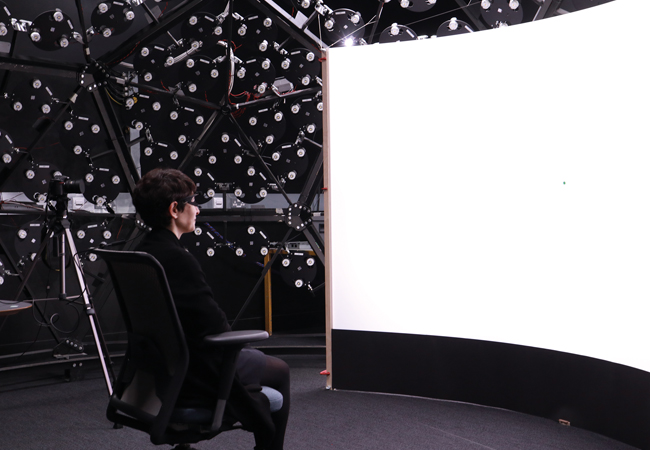
Simone Bonavia, a lighting designer at Steensen Varming, is studying for a PhD at University College London, supported by the Engineering and Physical Sciences Research Council and Steensen Varming. In 2023, she was awarded the Jean Heap Bursary for her research on the effect of spatial distribution of light on pupillary light reflex. The bursary, launched by the Society of Light and Lighting (SLL) in 2014, honours former SLL president Jean Heap’s dedication to lighting research and education throughout her career. Open to anyone with an interest in light and lighting, successful applicants will receive up to £4,000 in funding.
What was it like winning the bursary?
I am incredibly grateful and honoured; it means a lot that my research is supported by an institution such as CIBSE. Initiatives such as the Jean Heap Bursary encourage designers to be interested in research and to keep abreast of the challenges of new findings, and researchers to keep in mind the implications that their research may have in practice.
What research are you undertaking?
I have a keen interest in the effects of light on human health. Beyond allowing us to see the world around us, light plays an important role in supporting non-visual functions, such as synchronising circadian rhythms, regulating sleep, and enhancing alertness. With today’s indoor-centric lifestyle, the quality of light we are exposed to is largely influenced by our surroundings.
Research on how lighting impacts on non-visual processes has focused on the quantity, spectrum and timing of light. However, there remains a significant gap in our understanding of whether the direction of light within our field of view also affects these processes. This is the focal point of my research. Specifically, my study assesses whether varying the location of light within the field of view influences pupil response, as measured in a controlled laboratory experiment. The pupil response to light exposure is a valuable biomarker, reflecting the activity of photoreceptors in the retina that are linked to brain areas responsible for non-visual functions.
How is the bursary helping your research?
It has facilitated the setup of a technically challenging experiment, including funding an advanced eye-tracking headset. Alongside its application in the planned pilot study, this equipment can have a more lasting use in subsequent laboratory and field studies. Part of the funding is also being used to support the recruitment of participants for the pilot.
What do you hope to achieve with your research?
I hope that this research will enhance understanding of how light affects our physiology and whether the pattern of light in the visual field is worth investigating further in the natural environment. If the direction of light does have a bearing on the sensitivity of the non-visual system to light, the arrangement of windows or luminaires and surface finishes will be a factor in determining the biological effectiveness of light in space. Rather than light received at the plane of the cornea, an appraisal of how the retina responds to the light stimulus across the field of view is required to characterise light exposure.
How will it benefit SLL members and the wider industry?
This initiative addresses a fundamental question in evaluating light for non-visual functions. It will also raise awareness of the potential of light to affect physiology, promoting a holistic design approach.
The more we know about how light influences our biology, the more it becomes possible to optimise built environments to better support the specific needs of a project. For instance, night-shift workers can be supported in completing their visual tasks safely without unnecessarily stimulating the non-visual system. In conjunction with other research in the field, this study may inform future lighting standards and guidance.
- The bursary application process for 2024 is open, with a deadline for submissions of Friday 17 May. For more information, visit bit.ly/JeanHeapBursary24
